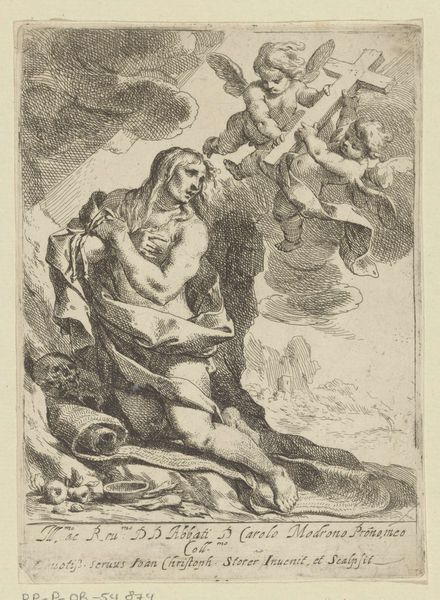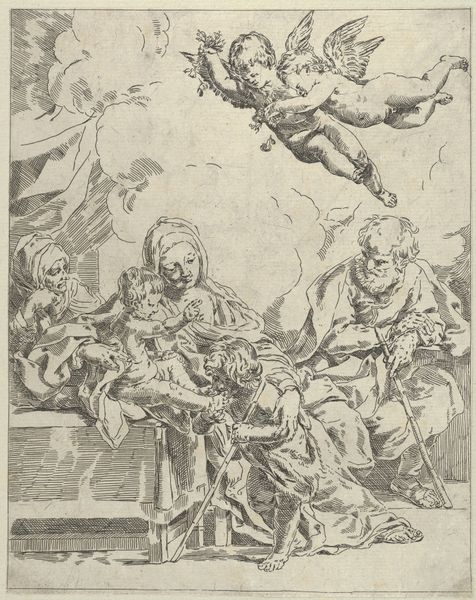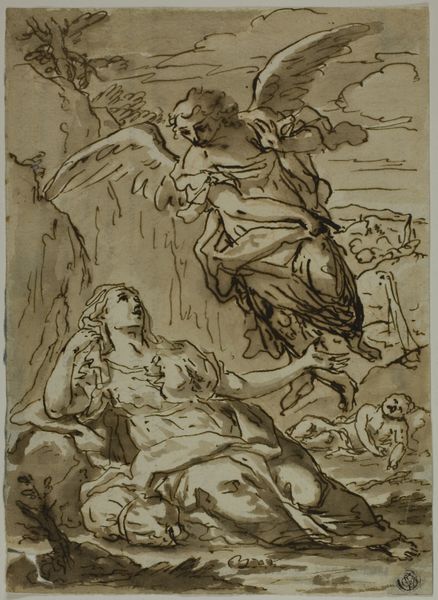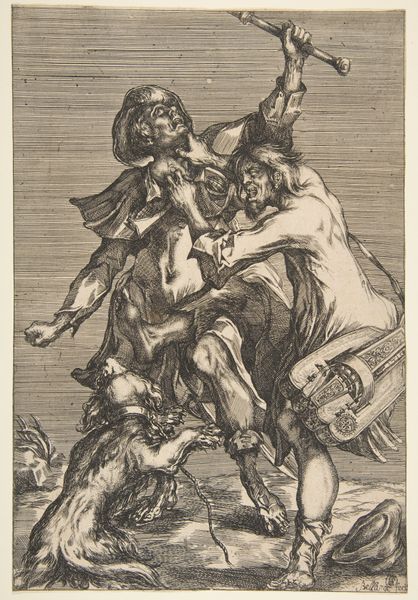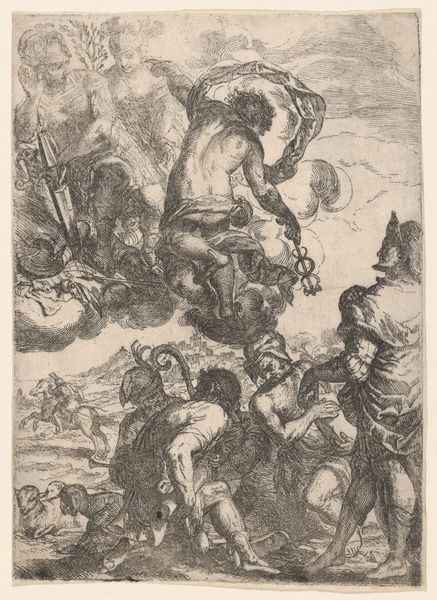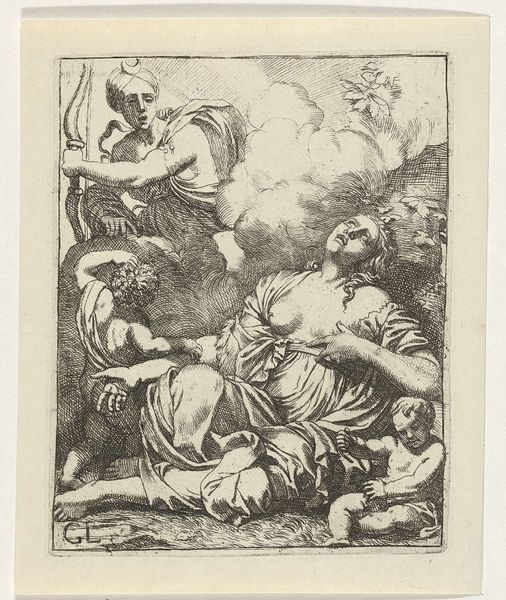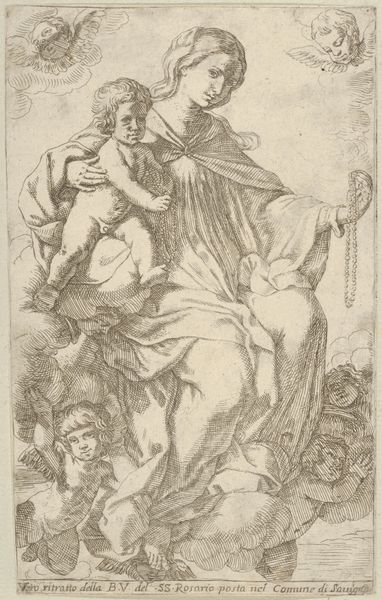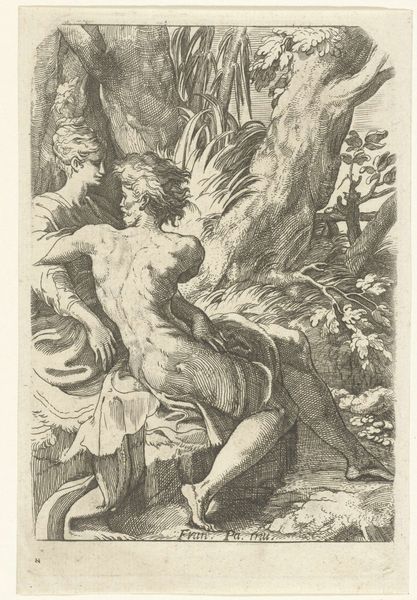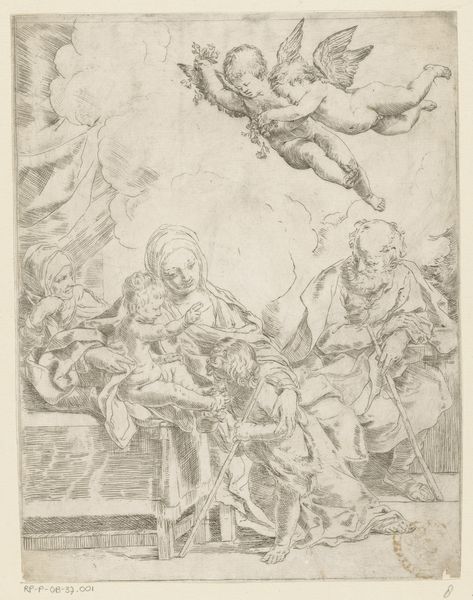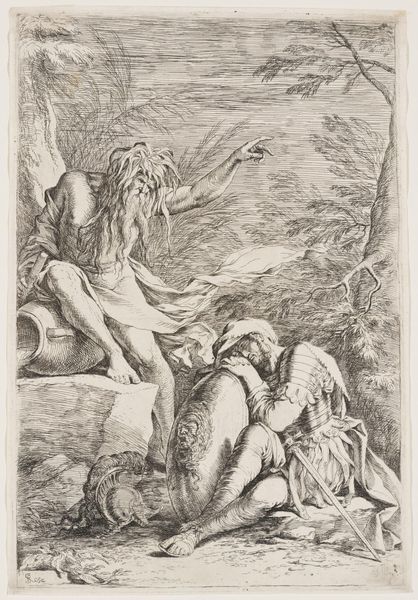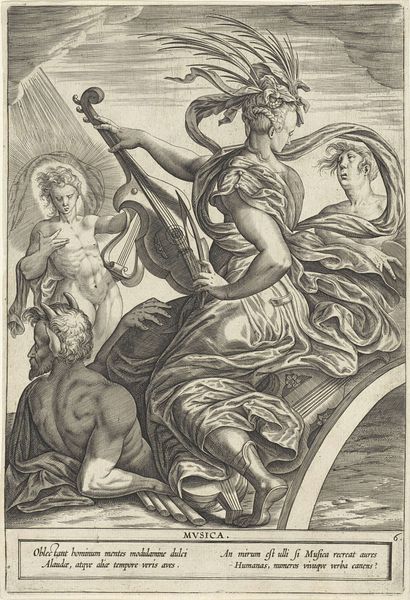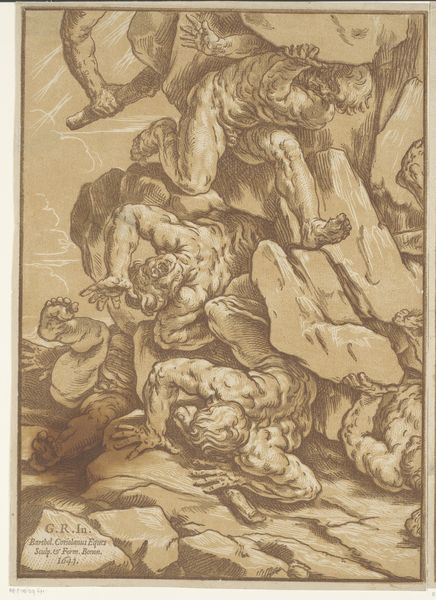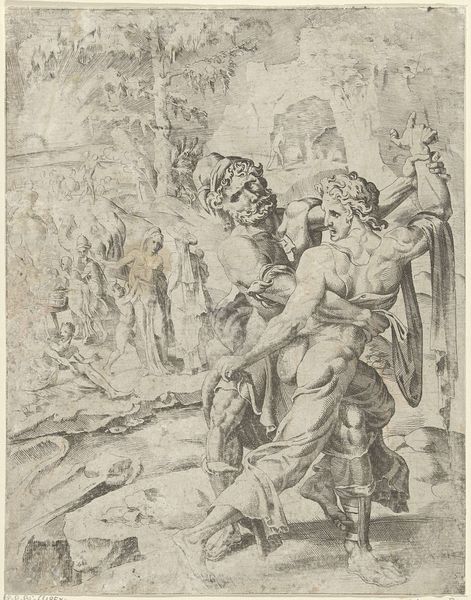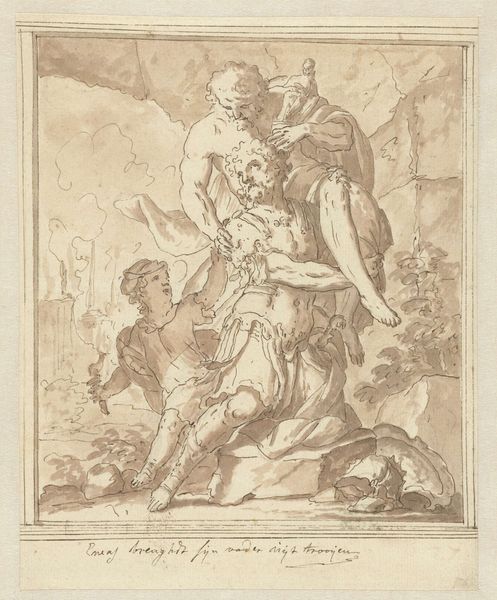
drawing, ink, engraving
#
drawing
#
narrative-art
#
baroque
#
pen sketch
#
landscape
#
figuration
#
ink
#
engraving
Dimensions: height 280 mm, width 210 mm
Copyright: Rijks Museum: Open Domain
Editor: This ink drawing, “The Abduction of Deianira by Nessus” by Willem van Haecht, dates to sometime between 1603 and 1637. The scene is…chaotic. There's so much movement implied, particularly in the centaur’s pose. How do you interpret this work formally? Curator: Note the diagonal composition. Van Haecht skillfully utilizes this to amplify the sense of dynamic energy inherent in the subject. Observe how the centaur's straining legs, contrasted against the clinging figure of Deianira, establish opposing forces that intersect dramatically at their point of contact. Do you notice anything else about this point of intersection? Editor: Well, the draping fabric seems to emphasize it... the way it swirls around them, but also visually separates them. There’s tension between the figures. Curator: Precisely. The artist contrasts the textured musculature of the centaur, rendered with tight hatching, against the smoother skin of Deianira. The cross-hatching used to delineate the landscape on the lower right also works to frame the centaur, bringing it into stark relief. Editor: So, the formal elements aren't just descriptive but really contribute to the overall narrative and mood? Curator: Exactly. The dramatic diagonals, the contrast in textures, and the considered placement of light and shadow guide our eye and enhance the emotional impact of the abduction. Do you think this strategy successfully enhances the emotional impact? Editor: Absolutely. I initially focused on the story, but now I see how the line work contributes to the overwhelming sense of the scene. Thank you. Curator: Indeed. This is an efficient and detailed approach for such an eventful and intricate artwork.
Comments
No comments
Be the first to comment and join the conversation on the ultimate creative platform.
